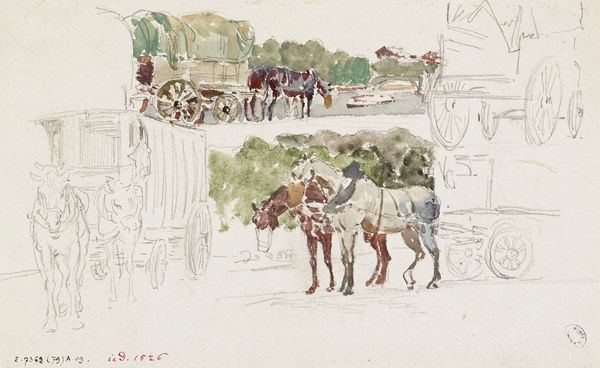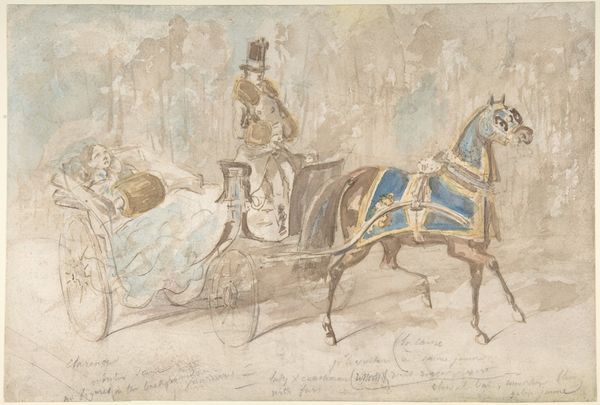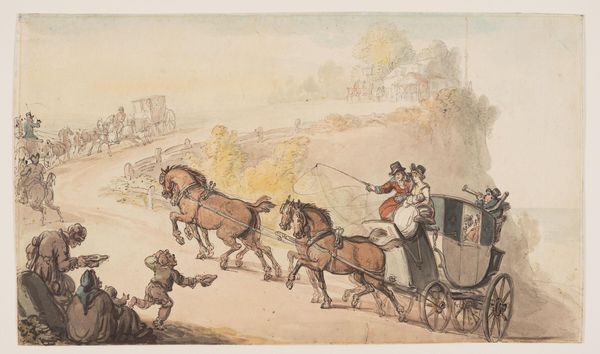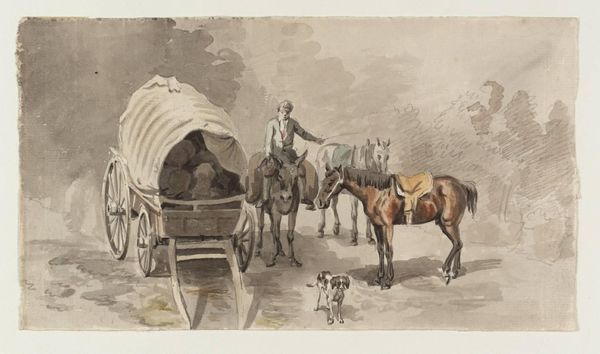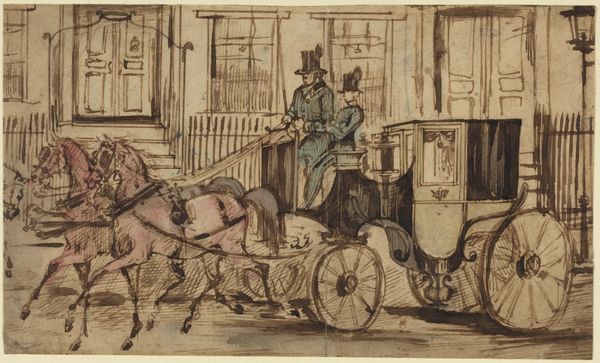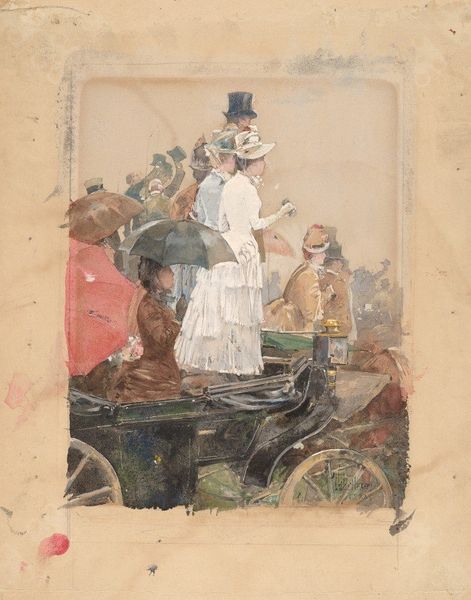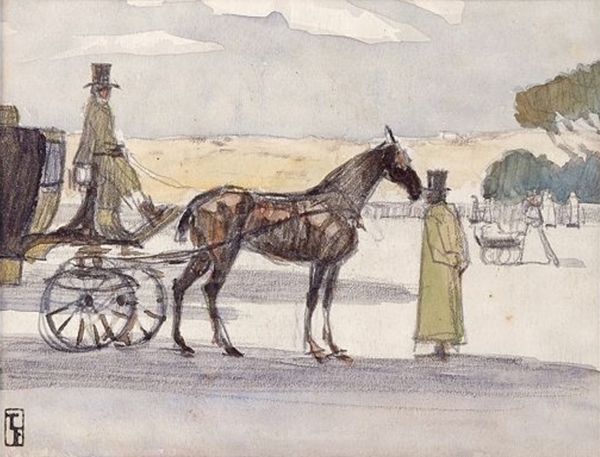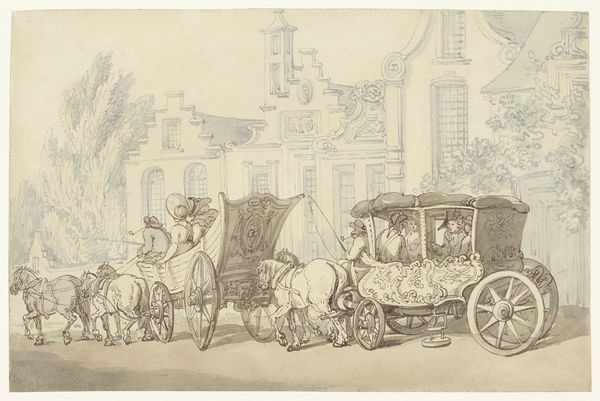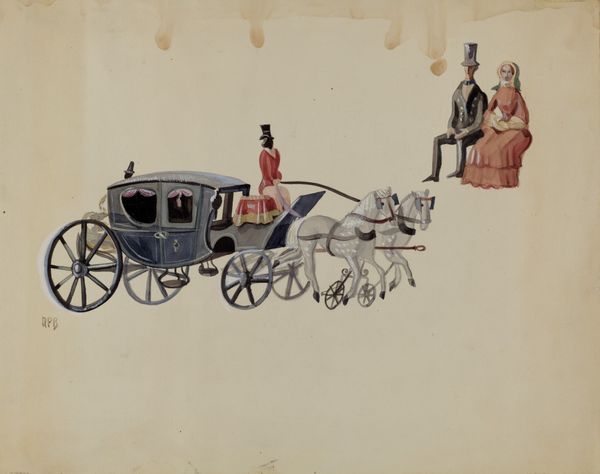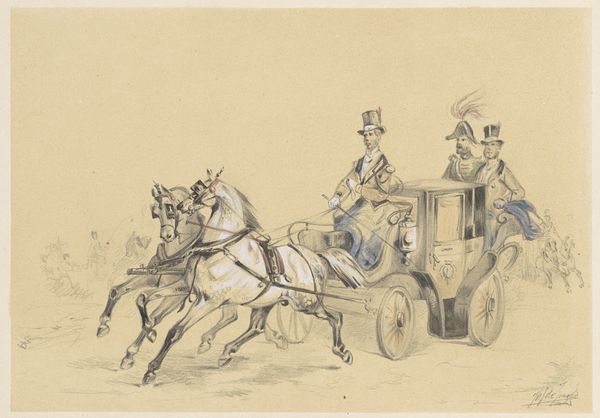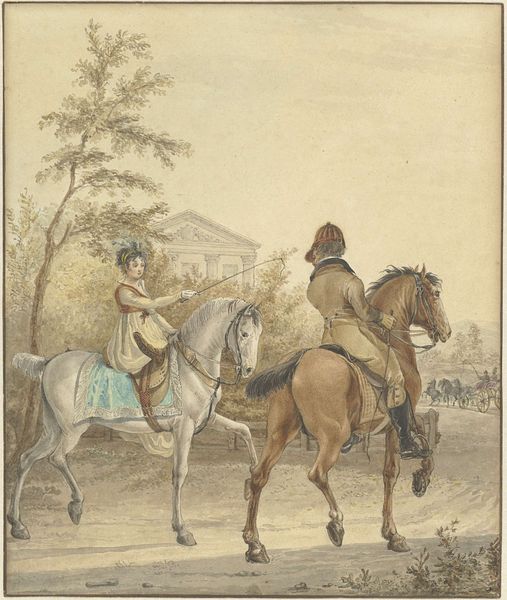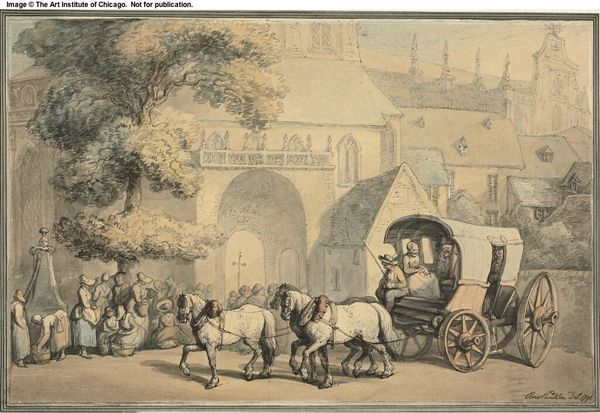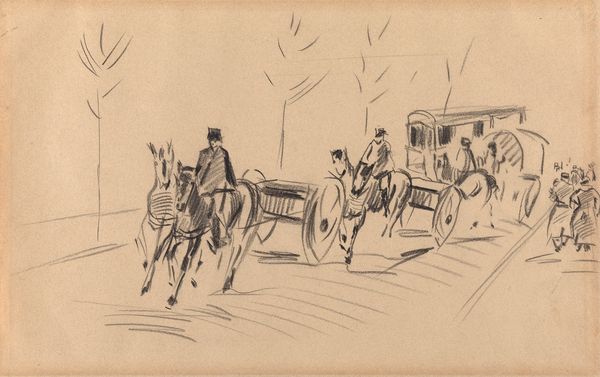
watercolor
#
landscape
#
watercolor
#
romanticism
#
watercolor
Dimensions: height 137 mm, width 176 mm
Copyright: Rijks Museum: Open Domain
Editor: This watercolor by Eugène-Louis Lami, "Coupé with Two Horses in a Wooded Setting," created sometime between 1810 and 1890, has this ethereal quality, almost like a memory fading into the landscape. The horses seem only half there. What strikes you about this piece? Curator: The unfinished quality of the horses is key. The coach is fully realized, while the horses exist as suggestions, spectral. It reminds us how social class in the 19th century was so often represented via equipage - the coach being as much a signifier of status as the person riding within. Lami's suggestion of spectral horses underscores the inherent instability of such markers. Editor: Instability? In what sense? Curator: Well, the Romantic era grappled with rapid social changes. This image, in its delicate rendering, hints at the fleeting nature of aristocracy, even while meticulously depicting the details of their carriage. What do the colours evoke in you? Editor: It's a very muted palette; lots of greys and browns except for that vivid yellow coat. Is that intentional? Curator: Absolutely. Yellow often represented status, luxury. The artist focuses our attention, literally 'colours in', the elements that signify the character’s position in society. The ghosting effect of the horses invites questions about their permanence and privilege. What if those markers faded, who would remain? Editor: So, Lami is using these symbols - the colour, the carriage - to almost question the established order? Curator: Precisely. It's a subtle critique, veiled within a seemingly idyllic scene. We are prompted to look beneath the surface. Editor: I never thought about a simple carriage scene holding so much social commentary. Curator: That is the magic of imagery! It carries meaning beyond the obvious.
Comments
No comments
Be the first to comment and join the conversation on the ultimate creative platform.
